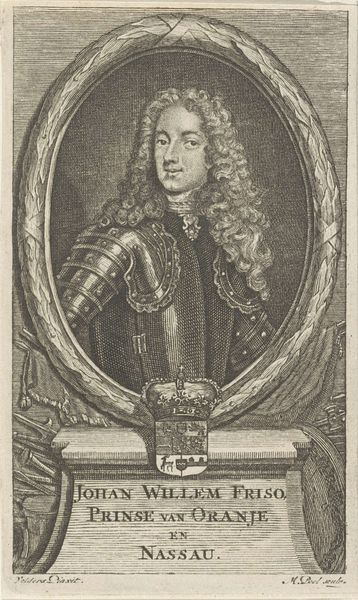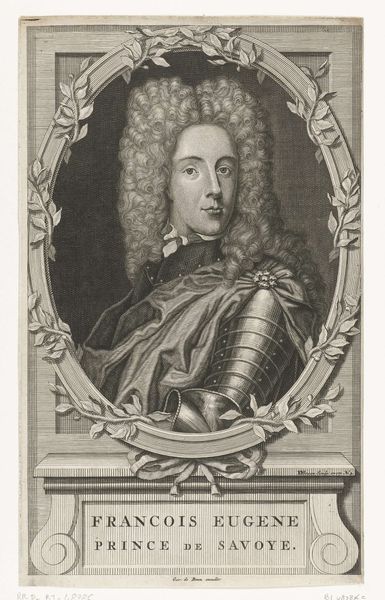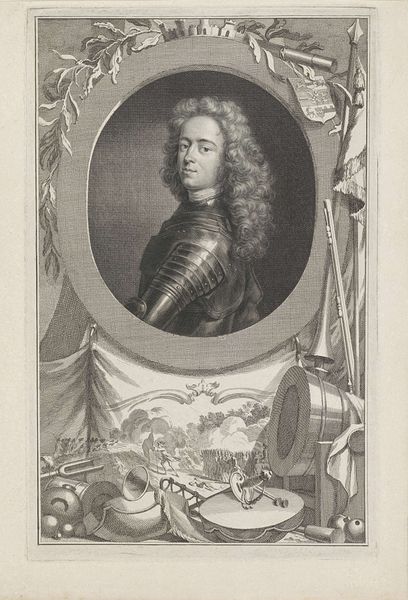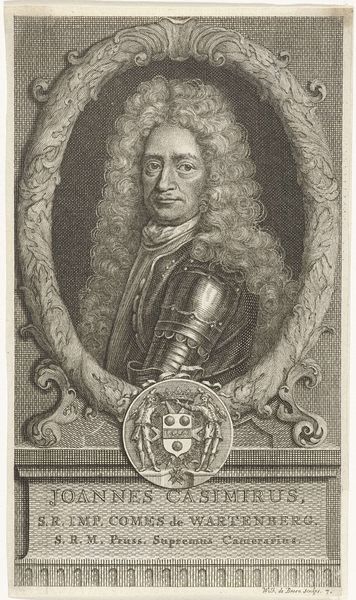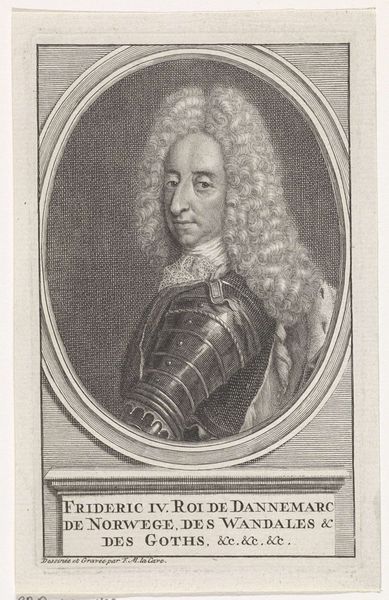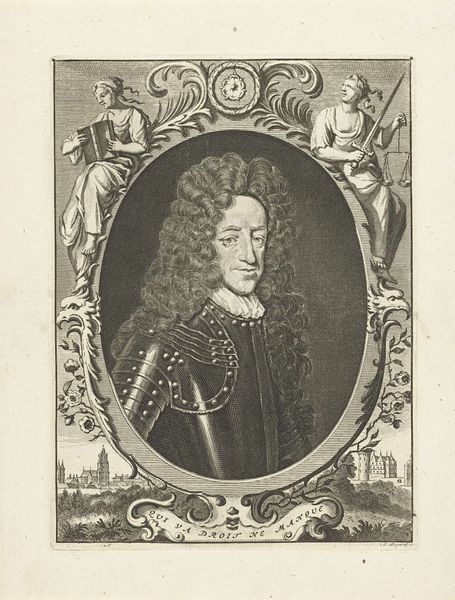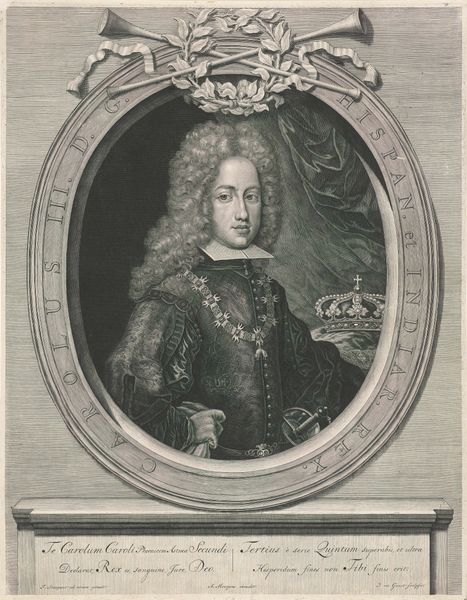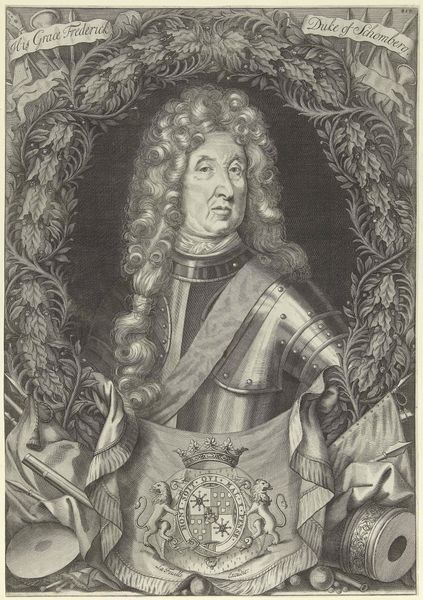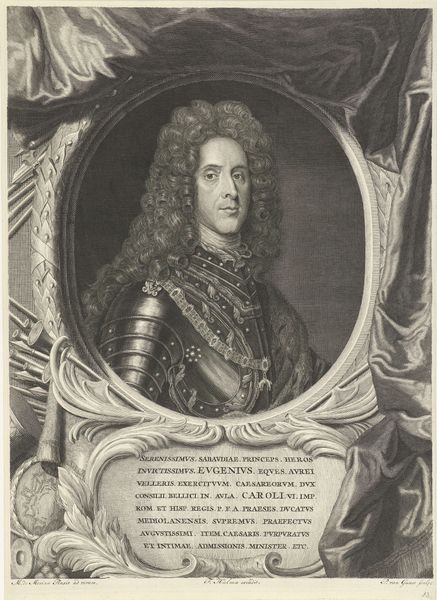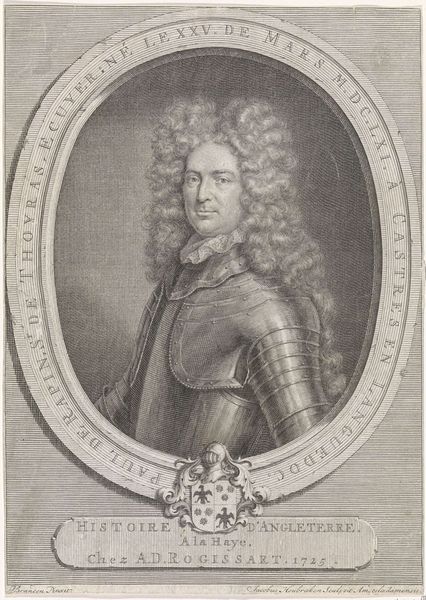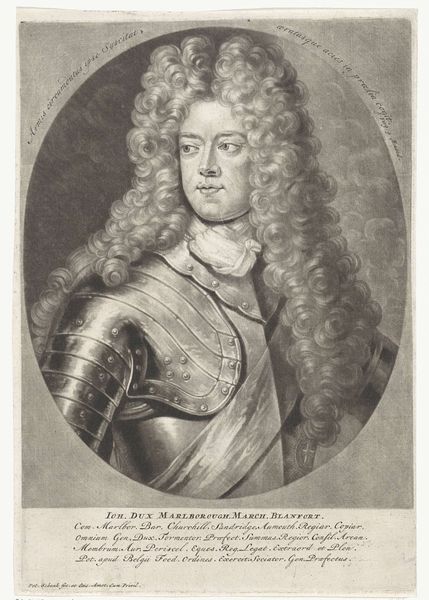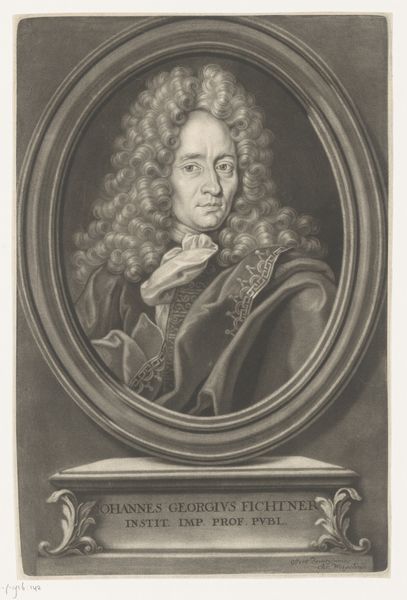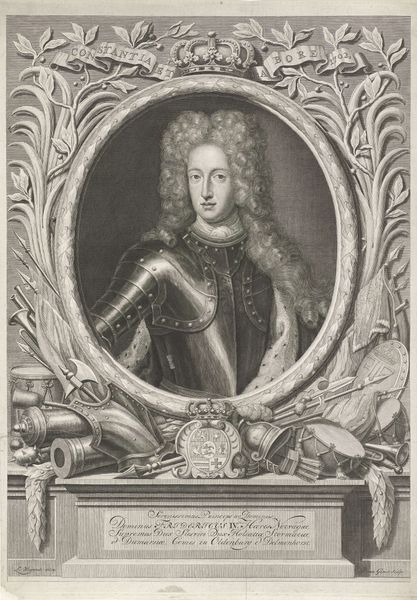
Portret van Johan Willem Friso, prins van Oranje-Nassau 1705 - 1722
0:00
0:00
engraving
#
portrait
#
baroque
#
portrait reference
#
portrait drawing
#
history-painting
#
engraving
Dimensions: height 582 mm, width 432 mm
Copyright: Rijks Museum: Open Domain
Pieter van Gunst made this portrait of Johan Willem Friso, Prince of Orange-Nassau, using engraving techniques. Let’s consider the wider context. In the late 17th and early 18th century, the Dutch Republic was a major European power, with a complex political landscape and intense rivalries between the Dutch merchant class and the House of Orange. Van Gunst’s print of Johan Willem Friso embodies the ways in which portraiture was used to assert power and legitimize authority. Note the armor, the elaborate wig, the laurel wreath, the cannons. All are conventional symbols of leadership. But portraiture is more than just a straightforward record of a person’s likeness; it actively constructs and reinforces social hierarchies. This engraving would have circulated widely, reinforcing the Prince's status in the Dutch social and political landscape. To understand art like this, it's important to examine historical documents, political pamphlets, and other visual representations of the period. By doing so, we can gain a deeper understanding of the social and institutional forces that shaped the creation and reception of art.
Comments
No comments
Be the first to comment and join the conversation on the ultimate creative platform.
